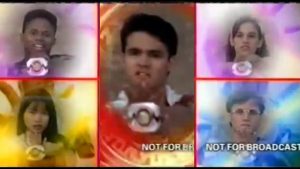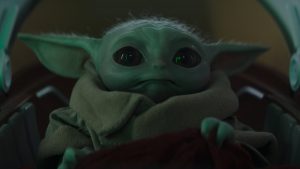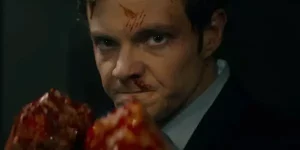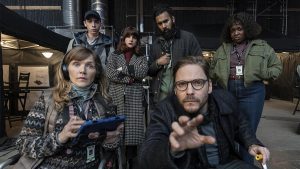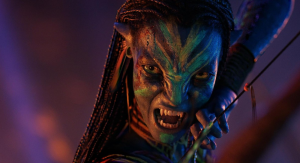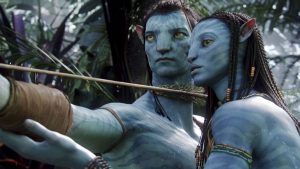
In the first trailer for Deadpool & Wolverine, Ryan Reynolds’ ever loquacious Wade Wilson gives a suspicious glance at the batons in the hands of the TVA Agents who interrupted the birthday party.
“Is that supposed to be scary? Pegging isn’t new for me, friendo,” Wade tells his assailants. Then, after waiting the appropriate beat of time for an audience giggle, he looks directly into the camera. “But it is for Disney.” With that last part, Deadpool his full arrival in the MCU. The gag doesn’t just highlight the Merc with a Mouth’s famous fourth-wall breaking awareness. It also indicates the edgy humor that made the character’s two movies at 20th Century Fox such big hits.
With his tiny glance to the camera, Deadpool suggests that he’s bringing some of that boundary-pushing humor to the wholesome House of Mouse. But here’s the irony: if you can talk about pegging in a Disney movie—more specifically, in a network television commercial for a Disney movie, a commercial that aired during the Super Bowl no less—then it isn’t that edgy, is it?
As much as Disney and MCU chief Kevin Feige insist that they’re retaining the same sensibilities that Deadpool had in the first film, Deadpool & Wolverine fully transforms the character into a character no more dangerous or subversive than any other Marvel hero.
Deadpool Before Movie Stardom
“Kid’s got a real keen eye for the obvious,” quips Deadpool when his younger opponent Cannonball observes that Wade has overcome his forcefield. That statement is about as humorous as Deadpool gets in his first appearance from New Mutants #98 (1991) where he appeared as an assassin sent to kill the New Mutants’ new leader Cable.
Yes, Deadpool began life as a generic edgy ’90s character, created by Rob Liefeld and Fabian Nicieza. Eventually, Nicieza injected more humor into the character, even embracing the similarities to Deathstroke by giving the new marvel assassin a name which riff’s on the DC Comics villain Slade Wilson. But Deadpool didn’t fully come into his own until Joe Kelly, Christopher Priest, and Gail Simone took over his solo title, eventually adding the metatextual awareness and off-beat humor that people have come to expect. Furthermore, it took Deadpool‘s 2010 foray into the Mature Readers’ Marvel MAX line to really become the uncouth killer he is today.
That mixture of self-awareness and gratuitous violence drove the infamous proof of concept footage that leaked online in 2014 and led to the actual movie’s production. Coming in at just under two minutes, the footage was produced by director Tim Miller and was commissioned by 20th Century Fox in 2012. But between the clearly R-rated content, and the lackluster response to Ryan Reynolds‘ Green Lantern, the studio balked.
Obviously, this all changed after fans went nuts online for leaked footage of Deadpool hacking his enemies to bits. Not that Fox had a reason to complain. The first Deadpool movie that was greenlit from that embarrassment went on to earn $782 million despite featuring a scene of Wade being pegged onscreen by his girlfriend. As it turned out, blood, guts, and sex sell… at least for a little while.
Deadpool’s Dad Jokes
Yes, everyone, it seems, loved Deadpool. But Deadpool didn’t want everyone to love him, at least not in 2016. Still released at the height of superhero movie madness, Deadpool attracted attention from viewers of all ages, prompting Reynolds to release a statement (in character) begging parents, “Please don’t take your underage children to see my movie.” Reynolds reiterated that sentiment while promoting Detective Pikachu in 2019, saying, “My kids will never see Deadpool.”
Five years later, things have evidently changed. Those same kids he wanted to shelter from the Merc with a Mouth are actually in Deadpool & Wolverine, along with their mother Blake Lively. And although he didn’t totally put his stamp of approval on other parents showing the movie to their children, Reynolds did call Deadpool & Wolverine “the first four-quadrant R-rated film.” For those (blessedly) unaware of movie marketer speak, “four-quadrant” means that the film appeals to all four of the categories to which studios try to appeal: Men under 25, Men over 25, Women under 25, and Women over 25.
So, yeah, Deadpool & Wolverine appeals to everyone. Including children and families.
The thing is, Reynolds isn’t wrong. To be sure, the movie features plenty of blood and guts, starting with a bunch of TVA agents who Deadpool eviscerates with Logan‘s corpse. But it’s all played like a more explicit version of a Looney Tunes short, with none of the extended cruelty of, say, a Terrifier film. Moreover, it’s set to that most innocuous of pop numbers, “Bye Bye Bye” by N’Sync. No wonder the sequence has become a standby for family YouTube channels.
The sex talk, while unusual for even an R-rated movie made by Disney, isn’t that out there either. In fact, a lot of it has to do with Deadpool’s crush on Wolverine, which can be read as veering close to the gay panic gags that stained comedies throughout the ’80s (and the ’90s. and the 2000s. and the 2010s. and… seriously, at least find a way to make the jokes funny if you’re going to keep doing them). However, there’s a sincerity to Reynolds’ delivery that shaves off some of the edge and makes them kind of charming.
Which is the secret sauce to Deadpool’s irreverent success. Reynolds may struggle to deliver regular dialogue without a car salesman’s wink, but he ironically brings sincerity to his snark. Even the foulest words from the Merc’s ever-running mouth welcome people in on the joke instead of pushing them away. It allows them to appreciate that Wade sincerely enjoys pegging, even if he’s the only Disney character to openly say so (but no longer indulge in the activity onscreen).
Everybody Loves Deadpool
Deadpool & Wolverine gets a lot of mileage out of poking fun at (and poking swords into) Nicepool, a handsome and very Canadian Deadpool Variant. Nicepool meets his horrible end when Deadpool uses his non-regenerating counterpart as a human shield, letting the good guy die in agony while our cad lives on. That sounds like the stuff of doppelgänger nightmares, but it’s not how it plays out onscreen. Like every other part of Deadpool & Wolverine, Nicepool’s death is just a big joke with no real stakes. Which is, of course, fine for an MCU movie.
However, the bigger joke is that Nicepool is Ryan Reynolds, a friendly Canadian who sometimes dresses up as a red-clad killer. And Ryan Reynolds is Deadpool, a friendly anti-hero who sometimes says dirty jokes and swears, and sometimes commits acts of CGI violence.
At no point, however, is Deadpool an edgy, offensive hero who pushes the boundaries of good taste. He’s always just your slightly uncouth uncle, who maybe gets mom to gasp and dad to roll his eyes, but not enough that he’s not invited to the family dinner… even if he keeps talking about pegging.
Deadpool & Wolverine is now streaming on Disney+ for your family viewing pleasure.
The post Deadpool’s Weird Transition from Edgelord to Disney Family Movie Hero appeared first on Den of Geek.

